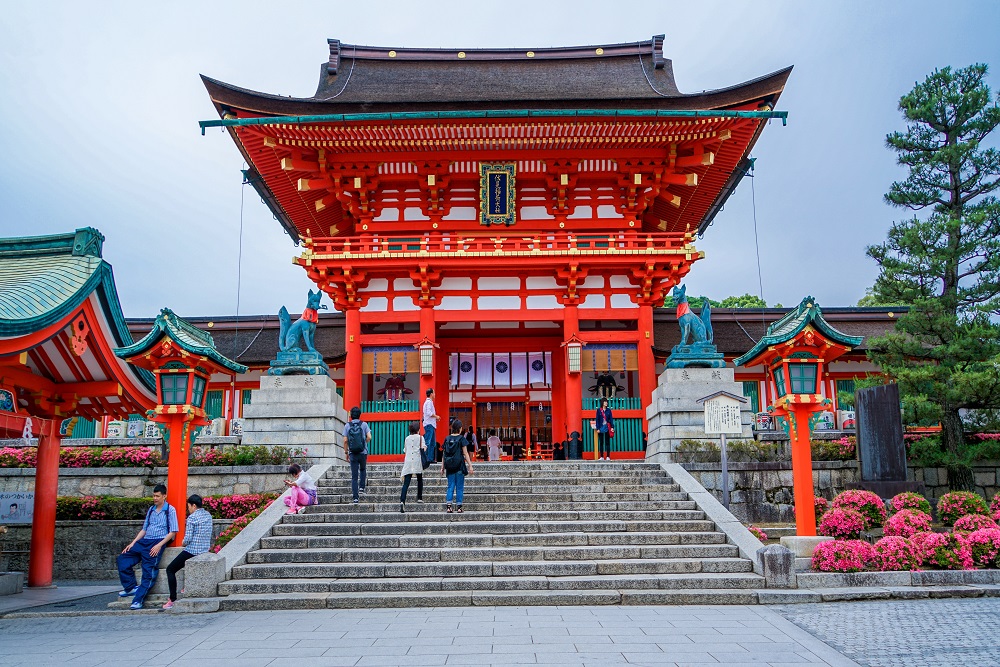Are you in search of a destination where history and culture blend seamlessly? Look no further than Southeast Asia. This region is not only home to some of the world’s most enchanting landscapes, but it also boasts a rich cultural heritage that dates back centuries. From ancient temples to vibrant festivals and mouth-watering cuisine, Southeast Asia has something for everyone. In this blog post, we’ll take you on an exciting journey through the history and culture of this fascinating region. So sit back, relax, and get ready to explore Southeast Asia like never before!
A Brief History of Southeast Asia
Southeast Asia has a rich and diverse history that spans over thousands of years. Archaeological evidence suggests that the region was inhabited by early humans as far back as 50,000 years ago. Over time, Southeast Asia became home to numerous ancient civilizations, including those of the Khmer Empire in Cambodia and the Majapahit Empire in Indonesia.
In the centuries that followed, Southeast Asia experienced significant influence from outside powers such as China and India. This led to a blending of cultures and traditions which can still be seen today.
During the colonial era, much of Southeast Asia was controlled by Western powers like Britain and France. This period brought about significant changes in politics, economics, and society throughout the region.
In more recent times, many countries in Southeast Asia have achieved independence and undergone rapid development. From Vietnam’s economic rise to Thailand’s modernization efforts, there is no doubt that this region will continue to play an important role on the global stage for years to come.
The Culture of Southeast Asia
Southeast Asia is a melting pot of various cultures and traditions. It is home to diverse communities with unique customs, beliefs, and practices that have been passed down from generation to generation.
One notable aspect of Southeast Asian culture is its emphasis on respect for elders. In countries like Vietnam and Thailand, the elderly are held in high regard and their opinions are valued. Family ties are also strong in this region, with extended families often living together under one roof.
Music and dance play an important role in Southeast Asian culture as well. Traditional performances featuring colorful costumes can be seen throughout the region during festive occasions such as weddings or religious celebrations.
Religion also plays a significant part in shaping Southeast Asian culture. Buddhism is prevalent in countries such as Thailand, Cambodia, Laos, Myanmar while Islam dominates Indonesia and Malaysia.
Food is another integral component of Southeast Asian culture – the cuisine here varies greatly from country to country but shares common elements such as the use of spices like chili peppers, lemongrass, ginger etc., fish sauce or soy sauce for seasoning dishes; coconut milk for richness; rice as a staple food source; noodles used creatively.
Despite cultural differences between each country within Southeast Asia there’s always something new learn about their colourful yet distinct cultures that has been shaped by history over time – which makes travelling around this region all more exciting!
The People of Southeast Asia
Southeast Asia is home to a diverse group of peoples, each with their unique customs and traditions. The people of Southeast Asia can be broadly categorized into four main ethnic groups: the Malays, the Chinese, the Indians, and the indigenous people.
The Malay population is primarily found in Malaysia and Indonesia. They are known for their hospitality and laid-back lifestyle. The Chinese population is spread out across several countries in Southeast Asia such as Singapore, Vietnam, Cambodia, Malaysia etc. They have a strong emphasis on education and entrepreneurship.
Indians were brought over during colonial times as laborers but now mostly reside in countries such as India itself or Singapore or Malaysia. Their culture has heavily influenced areas like religion cuisine & festivals like Diwali which are celebrated throughout SEA.
Finally there are also many indigenous communities that still live off-the-grid deep within tropical jungles or mountainous regions scattered all over SEAs territories from Myanmar to East Timor . These tribes have managed to preserve their traditional lifestyles despite modernization happening around them.
Despite differences between these cultural groups , they coexist harmoniously today lending an air of tolerance and respect towards one another’s religious practices or social norms amongst all cultures present here making it a melting pot of diversity!
The religions of Southeast Asia
Southeast Asia is a melting pot of diverse religions, with various beliefs and practices coexisting in harmony. The majority of the region’s population adhere to Buddhism, Islam, Hinduism or Christianity.
Buddhism has been present in Southeast Asia for over two thousand years and is the most widely practiced religion in the region. It emphasizes meditation and self-awareness, promoting peaceful existence with others.
Islam arrived later but has become prevalent throughout much of Southeast Asia. Muslim customs have influenced many aspects of daily life including cuisine and architecture.
Hinduism was introduced into Southeast Asia through Indian traders and merchants who settled there centuries ago. Balinese Hindus follow their own unique brand of Hinduism that incorporates ancestor worship as well as traditional animist beliefs.
Christianity was brought to the region by European colonizers during the 16th century. Today it remains a minority religion but is growing rapidly in some areas.
Despite differences between these four major religions, they all share common values such as respect for family elders, hospitality towards guests and living harmoniously within society regardless of faith.
The Languages of Southeast Asia
Southeast Asia is a region rich in cultural and linguistic diversity. With over 600 languages spoken across the region,
Southeast Asia is considered one of the most linguistically diverse areas on earth.
The languages of Southeast Asia can be classified into several language families, including Austronesian, Austroasiatic, Tai-Kadai, Hmong-Mien, and Sino-Tibetan. The Austronesian family includes many of the languages spoken in Indonesia and the Philippines. The Austroasiatic family includes Khmer (the official language of Cambodia) as well as various minority languages found throughout mainland Southeast Asia.
Tai-Kadai refers to a group of related languages spoken in Thailand and parts of Laos.
Hmong-Mien refers to two groups that are mainly spoken by ethnic minorities living in mountainous regions along China’s southern border with Vietnam.
Sino-Tibetan is also widely spoken across different countries like Myanmar or Burmese which use their own distinct script for writing them down.
Many countries have designated an official national language such as Bahasa Melayu (Malay) in Malaysia.
Also in Filipino/Tagalog in the Philippines while others have multiple recognized regional dialects.
Dialects such as Mandarin Chinese being one that varies depending on where it is being used.
What type/formalities are associated with its usage – this shows just how complex these linguistic systems can be!
The vast array of languages present within Southeast Asia serves to highlight the uniqueness and richness inherent within each culture found throughout this culturally diverse region.
The Cuisines of Southeast Asia
The cuisines of Southeast Asia are as diverse and exciting as the region itself.
Each country has its own unique flavors and techniques that make their dishes stand out.
In Thailand, spicy curries, stir-fried noodles, and fragrant soups dominate the cuisine.
The use of herbs such as lemongrass, galangal, and kaffir lime leaves adds a refreshing twist to these dishes.
Vietnam’s cuisine is heavily influenced by French colonialism with baguettes or “banh mi” sandwiches being a popular snack item.
Vietnamese pho noodle soup is also famous worldwide for its rich broth made from beef bones simmered for hours.
Indonesia’s cuisine is known for its bold flavors and mix of spices such as turmeric, coriander seeds, cumin seeds, ginger among others.
One of Indonesia’s most iconic dishes is Nasi Goreng (fried rice) which features savory ingredients like shrimp paste and sweet soy sauce.
Malaysia’s cuisine blends together Malay culinary traditions with Chinese influences creating a fusion style.
It delivers some delicious meals like Nasi Lemak (coconut rice) served with crispy fried anchovies or Sate (grilled meat skewers).
The Philippines’ food scene reflects the country’s tropical climate featuring coconut milk-based stews called “Ginataan”
along with grilled meats served on bamboo skewers known locally as “pork BBQ”.
The cuisines in Southeast Asia offer an array of tantalizing flavors making it a must-visit destination for foodies around the world.
Conclusion
Southeast Asia is a region with a rich and diverse history and culture.
From the ancient kingdoms to modern cities, Southeast Asia has something special to offer.
Especially for every traveler who wants to explore its unique heritage.
The people of this region are friendly and hospitable, which makes traveling here an unforgettable experience.
The religions practiced in Southeast Asia add another layer of cultural richness that makes it stand out from other regions around the world.
Moreover, the languages spoken in this region reflect its diversity and the melting pot of cultures that have blended together over time.
And last but not least, the cuisines found throughout Southeast Asia are some of the most delicious in the world.
If you’re looking for a destination that offers adventure, exploration and relaxation all at once,
then Southeast Asia should be on your list.
Take some time to immerse yourself in its rich history, traditions and customs – you won’t regret it!








